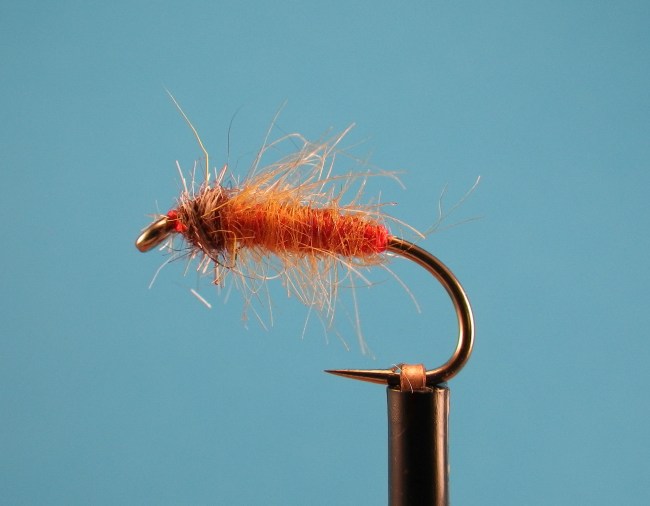Ever heard of a guide fly? In case you haven’t, guide flies have two qualities: They can be tied quickly, and they are high-confidence fish magnets. The Ginger Caddis Larva is such a fly.
It’s one of those flies that, if you saw it in the bins at your local shop, you might not give it a second look. But the trout certainly will. Angora goat is one of my favorite tying materials. It takes on a translucency underwater, and the fibers trap miniature air bubbles much like an emerging or diving caddis might.
The Ginger Caddis Larva is a quintessential fuzzy nymph; I fish it as nymph, bouncing it along the bottom, then as a wet, letting the fly swing up toward the surface. I’ll also fish it as a straight wet in a team of three flies. If I don’t get a strike, I let the fly sit there at swing’s end.
This pattern lends itself to dozens of variations. Try it in Insect or Highlander Green. Get some black or brown Angora and make it a little stonefly. Add a soft hackle (like partridge). Give it a bead head. Swap out peacock herl for the hare’s ear thorax. You get the idea.
Back to the guide fly thing. Two years ago I passed this fly out at one of my wet fly classes. It was a slow day on the river, but what little action we saw came on this fly (we were fishing teams of three flies, so the trout had a choice). A few weeks later, I ran into one of my students outside the local fly shop. “Steve,” he says, “I need some more of those Ginger Caddis Larvas and I can’t find them anywhere.”
He bought every single Ginger Caddis I had in my box on the spot.

Hook: 2x strong, size 10-18
Weight: 8-12 turns undersized wire
Thread: Orange
Body: Ginger Angora goat, very spikey
Thorax: Dark hare’s ear
Tying notes: To make it spikey and rough, try chopping the hairs up with scissors and winding them on a dubbing loop. Angora goat has long, unruly fibers that become problematic on smaller flies, so the chopping remedies that. I use high tack wax with Angora, like Loon Swax. I like to underweight this fly. Underweighting doesn’t mean that you’re putting wire under the body – you are – but rather, it refers to using lead wire that is thinner than the diameter of the hook wire. The goal is to help the fly sink, not suck the life out of it.





